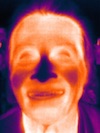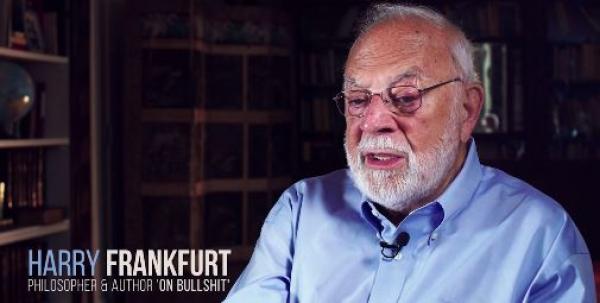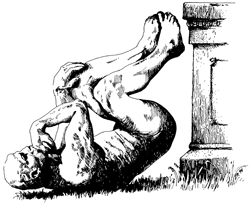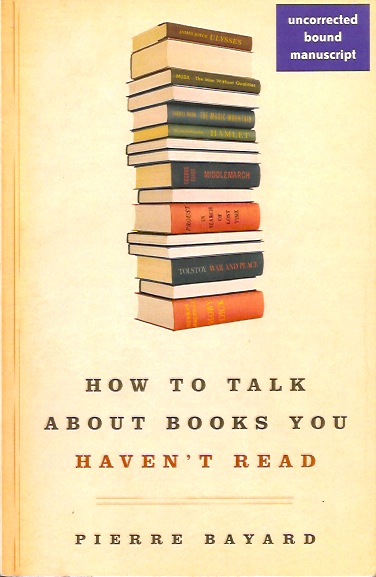 Summer Days, Summer Nights Are Gone
Summer Days, Summer Nights Are Gone
It has seemed like endless summer, the latter part of it including six weeks of a heat wave that just wouldn’t quit. Only on Sunday, September 11, did it abate, and only the past few nights have been cool.
That wilted us, but our garden has thrived. An abundance of tomatoes for several months, and now a plethora of green figs. Endless Japanese eggplants. Mint galore. And a fine assortment of basils. Not to mention a single thyme plant that, so far, has produced enough to last us a lifetime.
And we still have several months before the first frost lays it all low.
•
I decided to skip my gym routine for the duration of the swelter, taking what turned into a 6-week layoff, returning to it September 16th. When I did, I found I could handle only 60 percent of my prior routine. That came up about 10 percent the next week, and presumably will continue to rise. Still, I found that falloff notable. At my age, it seems, use it or lose it … quickly.
(Thanks to Brent LaSala of Seek Thermal for the portrait of me above, made with Seek’s CompactPro plug-in camera for smartphones. He made this at the fall Pepcom showcase for new holiday-season consumer tech items.)
Welcome to the Precariat
 You’ll find a recent article of mine, “Book reviews: Humans of New York, New York Non-Stop: A Photographic Album, and Project Lives: New York Public Housing Residents Photograph Their World,” at Camera Chronicle. In it I assess these three books, which in various ways represent the consequences of the deprofessionalization of photography. This is the third in a series of articles for this site, published by the midtown Manhattan camera store Photo Village.
You’ll find a recent article of mine, “Book reviews: Humans of New York, New York Non-Stop: A Photographic Album, and Project Lives: New York Public Housing Residents Photograph Their World,” at Camera Chronicle. In it I assess these three books, which in various ways represent the consequences of the deprofessionalization of photography. This is the third in a series of articles for this site, published by the midtown Manhattan camera store Photo Village.
For a broader assessment of the deprofessionalization of creative activity, see William Deresiewicz’s “The Death of the Artist — and the Birth of the Creative Entrepreneur,” published in the January/February 2015 issue of The Atlantic.
Close to Home
Sunday morning, September 18, the headline drew me: “Photographer who found bomb: ‘You see a lot of junk on the street in New York.'” A story about the weekend bombings in New York City, written by Barbara Demick, former Beijing bureau chief of the Los Angeles Times, and published in that paper?
Then the opening paragraphs:
Jane Schreibman got a telephone call about 10 p.m. Saturday asking whether she was all right.
Until then, the photographer hadn’t realized that a bomb had exploded on 23rd Street, just four blocks from her apartment, so she bolted downstairs to take a look at what was going on. That’s when she saw a strange object a few paces from her building’s front door.
I happen to know this photographer. Our paths have crossed in photo circles for years. I recognized her instantly in the Facebook photo accompanying the article. I sat up in my chair. Demick’s story continues,
“I thought it was a child’s science experiment,” said Schreibman, 66, in a telephone interview. It was a shiny metal pressure cooker with wires coming out and a rectangular object attached that was wrapped in duct tape. There was a white plastic bag next to it, but she couldn’t tell whether it was just garbage that had blown nearby.
“It was a funny-looking object. I thought, ‘Why would somebody have thrown this out here?’ But then again, you see a lot of junk on the street in New York,” she said.
Not giving it further thought,
Schreibman walked to see what was happening on 23rd Street, getting as far as the police barricade, where she ran into some neighbors. They chatted for a few minutes and then she headed home. The mysterious object was still there. She stared at it a few moments and reached for her telephone.
“I know they are always saying that if you see something suspicious, call 911,” she said.
“We will make this a high priority,” the dispatcher told her.
The police came within minutes. A man who Schreibman believes was a detective had only one word of advice. “Run!”
Schreibman was not the first — nor, presumably, the last — to pay this device little attention. A newly released surveillance video shows Ahmad Khan Rahami, the alleged bomber, leaving a soft-sided rolling suitcase with the explosive device inside on West 27th Street. Two men passing by subsequently open the bag, remove the bomb, and walk away with the suitcase, leaving behind the bomb — clearly visible — and the plastic shopping bag in which Rahami had wrapped it. A bit later, several men walk by, one of whom who appears to kick the plastic bag containing the device. A man wheeling a bicycle passes by and also kicks it. Others do not even give it a glance.
Finally, we see Schreibman, from behind, approach it, pause briefly to consider it, and then walk on. We don’t see her returning, some considerable time later, to find this “child’s science experiment” still there, give it some further thought, and dial 911, earning herself a small footnote in cultural history..

Jane Schreibman with terrorist bomb, W. 27th St., NYC, 9-17-16, surveillance video, screenshot
Though belated, Schreibman’s call did lead police to the eventual capture of the suspect, for which Schreibman deserves plaudits. However, this leads me to think that the authorities need to add something to that citywide advisory about alertness, which apparently doesn’t make the issue of urgency clear enough. My proposed revision: “If you see something, say something — right away!”
[Postscript, October 3, 2017: According to the New York Daily News, “Schreibman was honored in May [2017] with the New York State Liberty Medal, the highest civilian honor bestowed by a member of the state Senate, for her ‘selflessness and quick thinking.'” She later testified at the alleged bomber’s trial. — A. D. C.]
Piled Higher and Deeper
The coming of fall brings with it the annual Ig Nobel Prize awards announcements, always a treat. The 2016 event took place on September 22. The Ig Nobels have numerous prize categories, including “Peace.” This year’s winners — Gordon Pennycook, James Allan Cheyne, and several colleagues — got there with a research paper addressing a topic dear to my heart: “On the Reception and Detection of Pseudo-Profound Bullshit.”

Harry Frankfurt, “Bullshit!” (2016), screenshot
You can read their paper by clicking on the above link. (The correct citation: Judgment and Decision Making, Vol. 10, No. 6, November 2015, pp. 549-563.) I consider it a significant contribution to the emerging study of bullshit — and yes, snicker away, but this gives all indication of becoming a field of study, with at least one key text to date, Harry Frankfurt’s On Bullshit (Cambridge University Press, 2005). You can download a sampling of it here, and watch a short video of Frankfurt explaining his report here.
Pennycook et al make their contribution by addressing not the activity of bullshitting but the receptivity thereto. As they put it:
Whereas philosophers have been primarily concerned with the goals and intentions of the bullshitter, we are interested in the factors that predispose one to become or to resist becoming a bullshittee. Moreover, this sort of bullshit – which we refer to here as pseudo-profound bullshit – may be one of many different types. We focus on pseudo-profound bullshit because it represents a rather extreme point on what could be considered a spectrum of bullshit.

“The Stinker,” official mascot of the Ig Nobel Prizes.
As if foreseeing the current state of the 2016 election, they wrote,
[P]seudo-profound bullshit betrays a concern for verisimilitude or truthiness. We argue that an important adjutant [sic — I think they meant adjunct] of pseudo-profound bullshit is vagueness which, combined with a generally charitable attitude toward ambiguity, may be exacerbated by the nature of recent media. As a prime example, the necessary succinctness and rapidity of “Twitter” (140 characters per “Tweet”) may be particularly conducive to the promulgation of bullshit. … The concern for “profundity” reveals an important defining characteristic of bullshit (in general): that it attempts to impress rather than to inform; to be engaging rather than instructive.

Pierre Bayard, “How to Talk about Books You Haven’t Read” (2007), cover.
As a student of the subject myself — see the 2013 series “How to Talk Through Your Hat” — I doff my own chapeau to Pennycook and his team for bringing their attention (and thus mine) to the audience for bullshit, in addition to its producers.
Should you wish to pursue this fascinating subject further than my own ruminations, and theirs, the article by Pennycook et al includes an extensive bibliography. I’d also recommend the following:
“Linguistic Obfuscation in Fraudulent Science,” by David M. Markowitz and Jeffrey T. Hancock (Journal of Language and Social Psychology, November 2015). Reading between the lines, both “linguistic obfuscation” and “fraudulent” are polite synonyms for bullshit. Available online through libraries. In a 2015 interview, Markowitz commented,
We believe the underlying idea behind obfuscation is to muddle the truth. … Scientists faking data know that they are committing a misconduct and do not want to get caught. Therefore, one strategy to evade this may be to obscure parts of the paper. We suggest that language can be one of many variables to differentiate between fraudulent and genuine science. … Fraudulent papers had about 60 more jargon-like words per paper compared to unretracted papers. This is a non-trivial amount.

Dinosaur coprolite
In mathematics and the hard sciences, of course, one runs the real risk of actually getting caught when bullshitting. Academics in the social sciences and humanities do so relatively risk-free, with the result that the fecal deposits grow in size.
Most people don’t read scientific papers, of course, so awareness of the bullshit factor in that realm remains somewhat specialized. More have firsthand acquaintance with the broader issue of the pervasive opacity of academic writing. Many have addressed this issue; “The Needless Complexity of Academic Writing,” by Victoria Clayton (in the October 26, 2015 issue of The Atlantic), contains much useful information about several efforts to encourage clarity in prose, in the governmental and academic sectors. For example, did you know (I didn’t) that there exists such a thing as the 2010 Plain Writing Act?
To Be Or Not To Be
Regular readers of this blog know that I track variants of the self-excusing “That’s not the kind of person I am” trope. (See “Owning Yourself” in my post of October 5, 2014, and “Weasels, Encore …,” in my February 24, 2016 post.) In this tortured semantic maneuver, the speaker acknowledges his or her recorded words and/or actions while simultaneously distancing him- or herself from it by implying that, in effect, someone else occupying their body did it.
Earlier this year, on July 14, Dani Mathers, Playboy Playmate of the Year in 2015, used Snapchat to post a fat-shaming photo of a naked septuagenarian woman at the LA Fitness Health Club, along with a photo of Mathers laughing at her. “If I can’t unsee this then you can’t either,” read Mathers’s caption.

Dani Mathers, body-shaming Snapchat post, 7-14-16
The gym immediately notified the police and barred Mathers for life; she lost a plum job at local radio station KLOS 95.5 shortly thereafter. Now her victim has come forward to file a formal complaint with the L.A. police, and Mathers is under criminal investigation for invasion of privacy. She has hired celebrity attorney Tom Mesereau — who has defended Michael Jackson, Suge Knight, Robert Blake, and Mike Tyson — to represent her.
What brings this into my sphere of interest came in her original response to the social-media hailstorm that her mockery evoked. As Lisa Gutierrez reported in the Kansas City Star when the story broke:
“I have chosen to do what I do for a living because I love the female body and I know that body shaming is wrong and that’s not what I’m about,” Mathers said. “That’s not the type of person that I am.
“I know that I have upset a lot of people out there but please, please believe me when I say this is not the type of person I am. I’ve never done this before, I will never do this again. You have my word.”
•
For a more recent entry in contestant in the denial-of-identity sweepstakes, USA TODAY reports that

Brig. Gen. Michael Bobeck, U.S. Army photo
An Army National Guard general on the Joint Chiefs of Staff has been fired from his job following an extramarital affair, and interviews and records show that he had also negotiated a job and lived rent-free in the home of a defense contractor …
Brig. Gen. Michael Bobeck has been the focus of an internal investigation into an extramarital affair — a violation of military law — and misuse of government resources, according to Defense Department officials.
Despite what appear as blatant conflicts of interest and other shenanigans, Tom Vanden Brook’s report continues,
Bobeck rejects any suggestion that he would have abused his military position to benefit himself or a defense contractor, said his Army lawyer, Lt. Col. Adam Kazin. … “Any implication that there was any wrongdoing is very upsetting to him,” Kazin said. “Abusing his position to enrich himself is not in line with how he views himself.”
Like Mathers, Bobeck, from his own perspective, just isn’t the kind of person who could do the things he did. Puts me in mind of Rob Corddry’s classic takedown of this trope on The Daily Show, from the Abu Ghraib scandal of 2004: “Remember, just because torturing prisoners is something we did doesn’t mean it’s something we would do.”
•
 Special offer: If you want me to either continue pursuing a particular subject or give you a break and (for one post) write on a topic — my choice — other than the current main story, make a donation of $50 via the PayPal widget below, indicating your preference in a note accompanying your donation. I’ll credit you as that new post’s sponsor, and link to a website of your choosing. Include a note with your snail-mail address (or email it to me separately) for a free signed copy of my 1995 book Critical Focus!
Special offer: If you want me to either continue pursuing a particular subject or give you a break and (for one post) write on a topic — my choice — other than the current main story, make a donation of $50 via the PayPal widget below, indicating your preference in a note accompanying your donation. I’ll credit you as that new post’s sponsor, and link to a website of your choosing. Include a note with your snail-mail address (or email it to me separately) for a free signed copy of my 1995 book Critical Focus!
______________________
xx
Dog Day Afternoons: Bits & Pieces (10)
It has seemed like endless summer, the latter part of it including six weeks of a heat wave that just wouldn’t quit. Only on Sunday, September 11, did it abate, and only the past few nights have been cool.
That wilted us, but our garden has thrived. An abundance of tomatoes for several months, and now a plethora of green figs. Endless Japanese eggplants. Mint galore. And a fine assortment of basils. Not to mention a single thyme plant that, so far, has produced enough to last us a lifetime.
And we still have several months before the first frost lays it all low.
•
I decided to skip my gym routine for the duration of the swelter, taking what turned into a 6-week layoff, returning to it September 16th. When I did, I found I could handle only 60 percent of my prior routine. That came up about 10 percent the next week, and presumably will continue to rise. Still, I found that falloff notable. At my age, it seems, use it or lose it … quickly.
(Thanks to Brent LaSala of Seek Thermal for the portrait of me above, made with Seek’s CompactPro plug-in camera for smartphones. He made this at the fall Pepcom showcase for new holiday-season consumer tech items.)
Welcome to the Precariat
For a broader assessment of the deprofessionalization of creative activity, see William Deresiewicz’s “The Death of the Artist — and the Birth of the Creative Entrepreneur,” published in the January/February 2015 issue of The Atlantic.
Close to Home
Sunday morning, September 18, the headline drew me: “Photographer who found bomb: ‘You see a lot of junk on the street in New York.'” A story about the weekend bombings in New York City, written by Barbara Demick, former Beijing bureau chief of the Los Angeles Times, and published in that paper?
Then the opening paragraphs:
Jane Schreibman got a telephone call about 10 p.m. Saturday asking whether she was all right.
Until then, the photographer hadn’t realized that a bomb had exploded on 23rd Street, just four blocks from her apartment, so she bolted downstairs to take a look at what was going on. That’s when she saw a strange object a few paces from her building’s front door.
I happen to know this photographer. Our paths have crossed in photo circles for years. I recognized her instantly in the Facebook photo accompanying the article. I sat up in my chair. Demick’s story continues,
“I thought it was a child’s science experiment,” said Schreibman, 66, in a telephone interview. It was a shiny metal pressure cooker with wires coming out and a rectangular object attached that was wrapped in duct tape. There was a white plastic bag next to it, but she couldn’t tell whether it was just garbage that had blown nearby.
“It was a funny-looking object. I thought, ‘Why would somebody have thrown this out here?’ But then again, you see a lot of junk on the street in New York,” she said.
Not giving it further thought,
Schreibman walked to see what was happening on 23rd Street, getting as far as the police barricade, where she ran into some neighbors. They chatted for a few minutes and then she headed home. The mysterious object was still there. She stared at it a few moments and reached for her telephone.
“I know they are always saying that if you see something suspicious, call 911,” she said.
“We will make this a high priority,” the dispatcher told her.
The police came within minutes. A man who Schreibman believes was a detective had only one word of advice. “Run!”
Schreibman was not the first — nor, presumably, the last — to pay this device little attention. A newly released surveillance video shows Ahmad Khan Rahami, the alleged bomber, leaving a soft-sided rolling suitcase with the explosive device inside on West 27th Street. Two men passing by subsequently open the bag, remove the bomb, and walk away with the suitcase, leaving behind the bomb — clearly visible — and the plastic shopping bag in which Rahami had wrapped it. A bit later, several men walk by, one of whom who appears to kick the plastic bag containing the device. A man wheeling a bicycle passes by and also kicks it. Others do not even give it a glance.
Finally, we see Schreibman, from behind, approach it, pause briefly to consider it, and then walk on. We don’t see her returning, some considerable time later, to find this “child’s science experiment” still there, give it some further thought, and dial 911, earning herself a small footnote in cultural history..
Jane Schreibman with terrorist bomb, W. 27th St., NYC, 9-17-16, surveillance video, screenshot
Though belated, Schreibman’s call did lead police to the eventual capture of the suspect, for which Schreibman deserves plaudits. However, this leads me to think that the authorities need to add something to that citywide advisory about alertness, which apparently doesn’t make the issue of urgency clear enough. My proposed revision: “If you see something, say something — right away!”
[Postscript, October 3, 2017: According to the New York Daily News, “Schreibman was honored in May [2017] with the New York State Liberty Medal, the highest civilian honor bestowed by a member of the state Senate, for her ‘selflessness and quick thinking.'” She later testified at the alleged bomber’s trial. — A. D. C.]
Piled Higher and Deeper
The coming of fall brings with it the annual Ig Nobel Prize awards announcements, always a treat. The 2016 event took place on September 22. The Ig Nobels have numerous prize categories, including “Peace.” This year’s winners — Gordon Pennycook, James Allan Cheyne, and several colleagues — got there with a research paper addressing a topic dear to my heart: “On the Reception and Detection of Pseudo-Profound Bullshit.”
Harry Frankfurt, “Bullshit!” (2016), screenshot
You can read their paper by clicking on the above link. (The correct citation: Judgment and Decision Making, Vol. 10, No. 6, November 2015, pp. 549-563.) I consider it a significant contribution to the emerging study of bullshit — and yes, snicker away, but this gives all indication of becoming a field of study, with at least one key text to date, Harry Frankfurt’s On Bullshit (Cambridge University Press, 2005). You can download a sampling of it here, and watch a short video of Frankfurt explaining his report here.
Pennycook et al make their contribution by addressing not the activity of bullshitting but the receptivity thereto. As they put it:
Whereas philosophers have been primarily concerned with the goals and intentions of the bullshitter, we are interested in the factors that predispose one to become or to resist becoming a bullshittee. Moreover, this sort of bullshit – which we refer to here as pseudo-profound bullshit – may be one of many different types. We focus on pseudo-profound bullshit because it represents a rather extreme point on what could be considered a spectrum of bullshit.
“The Stinker,” official mascot of the Ig Nobel Prizes.
As if foreseeing the current state of the 2016 election, they wrote,
[P]seudo-profound bullshit betrays a concern for verisimilitude or truthiness. We argue that an important adjutant [sic — I think they meant adjunct] of pseudo-profound bullshit is vagueness which, combined with a generally charitable attitude toward ambiguity, may be exacerbated by the nature of recent media. As a prime example, the necessary succinctness and rapidity of “Twitter” (140 characters per “Tweet”) may be particularly conducive to the promulgation of bullshit. … The concern for “profundity” reveals an important defining characteristic of bullshit (in general): that it attempts to impress rather than to inform; to be engaging rather than instructive.
Pierre Bayard, “How to Talk about Books You Haven’t Read” (2007), cover.
As a student of the subject myself — see the 2013 series “How to Talk Through Your Hat” — I doff my own chapeau to Pennycook and his team for bringing their attention (and thus mine) to the audience for bullshit, in addition to its producers.
Should you wish to pursue this fascinating subject further than my own ruminations, and theirs, the article by Pennycook et al includes an extensive bibliography. I’d also recommend the following:
“Linguistic Obfuscation in Fraudulent Science,” by David M. Markowitz and Jeffrey T. Hancock (Journal of Language and Social Psychology, November 2015). Reading between the lines, both “linguistic obfuscation” and “fraudulent” are polite synonyms for bullshit. Available online through libraries. In a 2015 interview, Markowitz commented,
We believe the underlying idea behind obfuscation is to muddle the truth. … Scientists faking data know that they are committing a misconduct and do not want to get caught. Therefore, one strategy to evade this may be to obscure parts of the paper. We suggest that language can be one of many variables to differentiate between fraudulent and genuine science. … Fraudulent papers had about 60 more jargon-like words per paper compared to unretracted papers. This is a non-trivial amount.
Dinosaur coprolite
In mathematics and the hard sciences, of course, one runs the real risk of actually getting caught when bullshitting. Academics in the social sciences and humanities do so relatively risk-free, with the result that the fecal deposits grow in size.
Most people don’t read scientific papers, of course, so awareness of the bullshit factor in that realm remains somewhat specialized. More have firsthand acquaintance with the broader issue of the pervasive opacity of academic writing. Many have addressed this issue; “The Needless Complexity of Academic Writing,” by Victoria Clayton (in the October 26, 2015 issue of The Atlantic), contains much useful information about several efforts to encourage clarity in prose, in the governmental and academic sectors. For example, did you know (I didn’t) that there exists such a thing as the 2010 Plain Writing Act?
To Be Or Not To Be
Regular readers of this blog know that I track variants of the self-excusing “That’s not the kind of person I am” trope. (See “Owning Yourself” in my post of October 5, 2014, and “Weasels, Encore …,” in my February 24, 2016 post.) In this tortured semantic maneuver, the speaker acknowledges his or her recorded words and/or actions while simultaneously distancing him- or herself from it by implying that, in effect, someone else occupying their body did it.
Earlier this year, on July 14, Dani Mathers, Playboy Playmate of the Year in 2015, used Snapchat to post a fat-shaming photo of a naked septuagenarian woman at the LA Fitness Health Club, along with a photo of Mathers laughing at her. “If I can’t unsee this then you can’t either,” read Mathers’s caption.
Dani Mathers, body-shaming Snapchat post, 7-14-16
The gym immediately notified the police and barred Mathers for life; she lost a plum job at local radio station KLOS 95.5 shortly thereafter. Now her victim has come forward to file a formal complaint with the L.A. police, and Mathers is under criminal investigation for invasion of privacy. She has hired celebrity attorney Tom Mesereau — who has defended Michael Jackson, Suge Knight, Robert Blake, and Mike Tyson — to represent her.
What brings this into my sphere of interest came in her original response to the social-media hailstorm that her mockery evoked. As Lisa Gutierrez reported in the Kansas City Star when the story broke:
“I have chosen to do what I do for a living because I love the female body and I know that body shaming is wrong and that’s not what I’m about,” Mathers said. “That’s not the type of person that I am.
“I know that I have upset a lot of people out there but please, please believe me when I say this is not the type of person I am. I’ve never done this before, I will never do this again. You have my word.”
•
For a more recent entry in contestant in the denial-of-identity sweepstakes, USA TODAY reports that
Brig. Gen. Michael Bobeck, U.S. Army photo
An Army National Guard general on the Joint Chiefs of Staff has been fired from his job following an extramarital affair, and interviews and records show that he had also negotiated a job and lived rent-free in the home of a defense contractor …
Brig. Gen. Michael Bobeck has been the focus of an internal investigation into an extramarital affair — a violation of military law — and misuse of government resources, according to Defense Department officials.
Despite what appear as blatant conflicts of interest and other shenanigans, Tom Vanden Brook’s report continues,
Bobeck rejects any suggestion that he would have abused his military position to benefit himself or a defense contractor, said his Army lawyer, Lt. Col. Adam Kazin. … “Any implication that there was any wrongdoing is very upsetting to him,” Kazin said. “Abusing his position to enrich himself is not in line with how he views himself.”
Like Mathers, Bobeck, from his own perspective, just isn’t the kind of person who could do the things he did. Puts me in mind of Rob Corddry’s classic takedown of this trope on The Daily Show, from the Abu Ghraib scandal of 2004: “Remember, just because torturing prisoners is something we did doesn’t mean it’s something we would do.”
•
______________________
xx